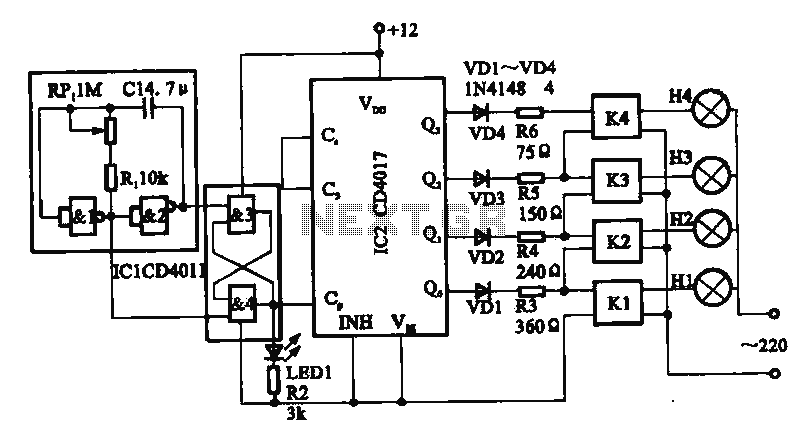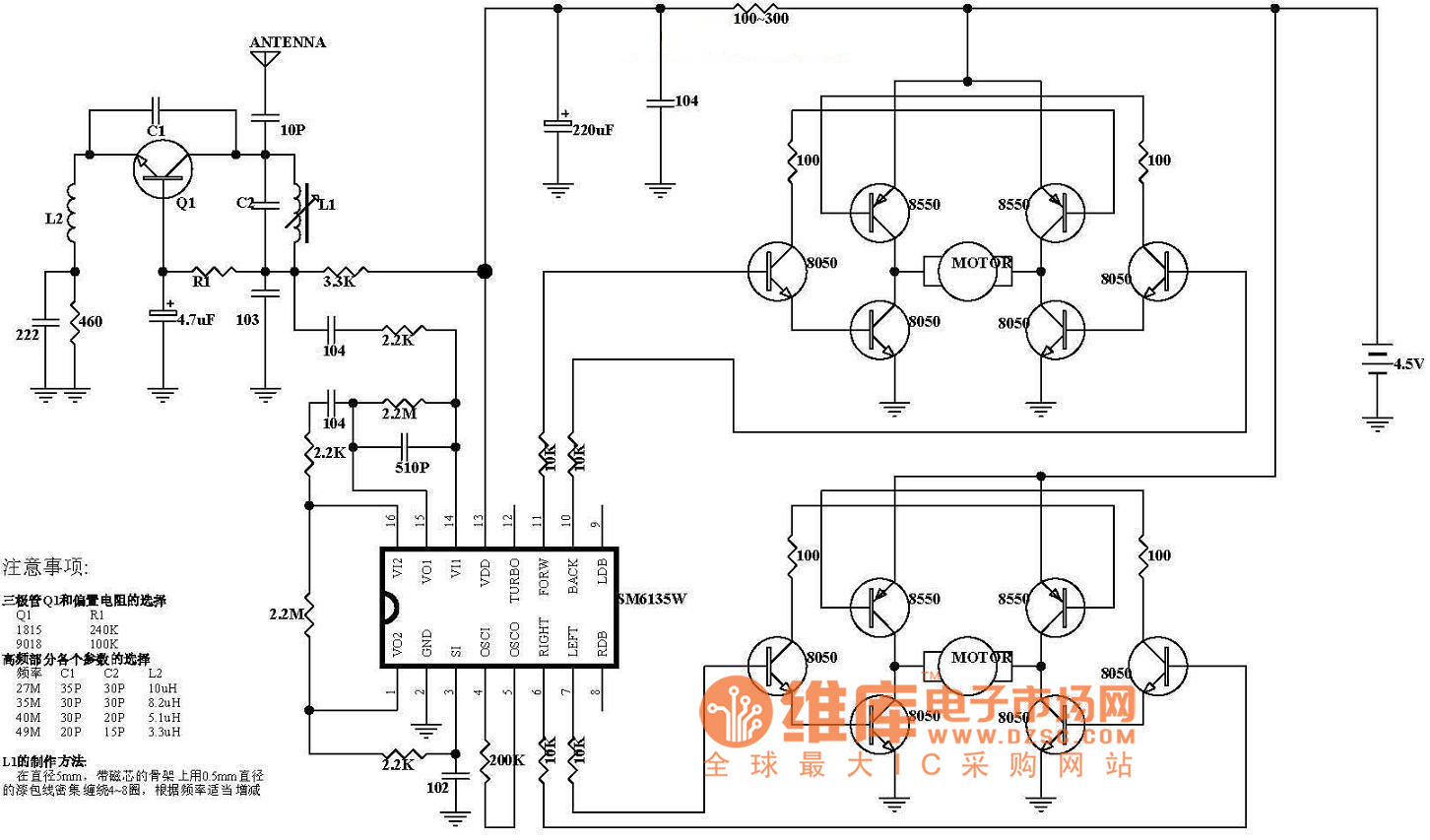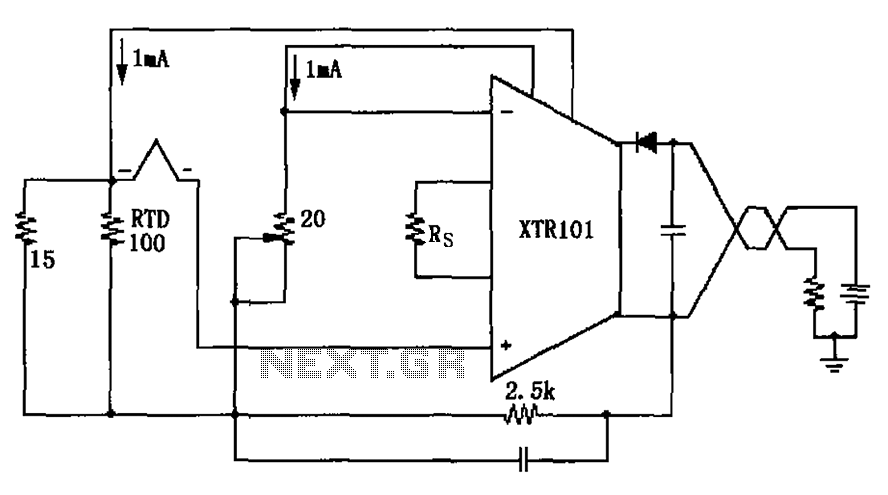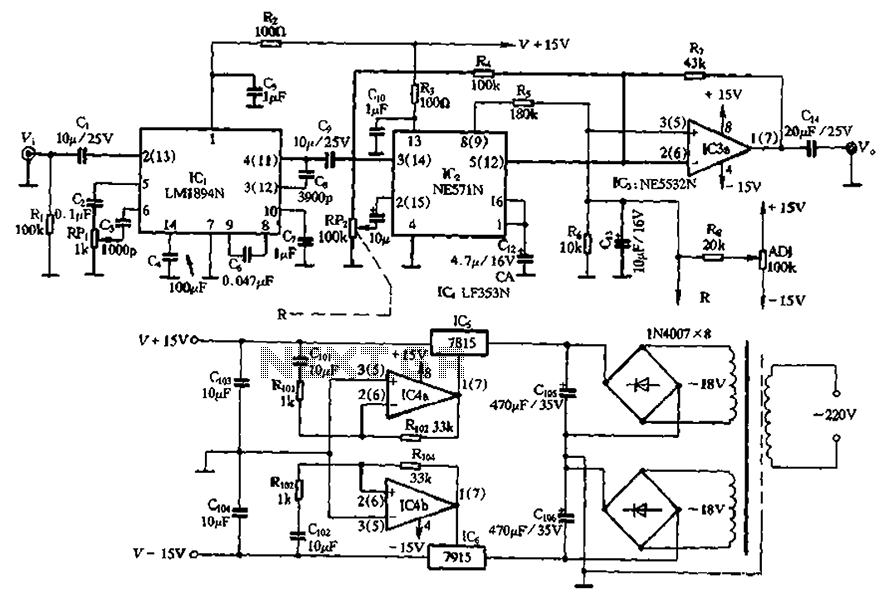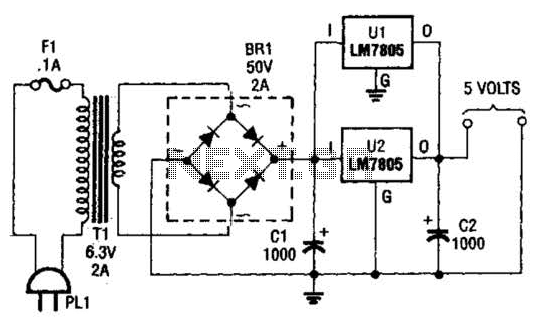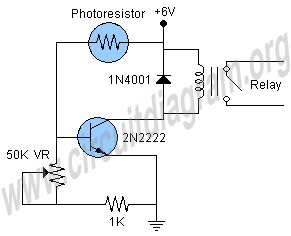
Adjustable output voltage regulator type rectifier circuit times
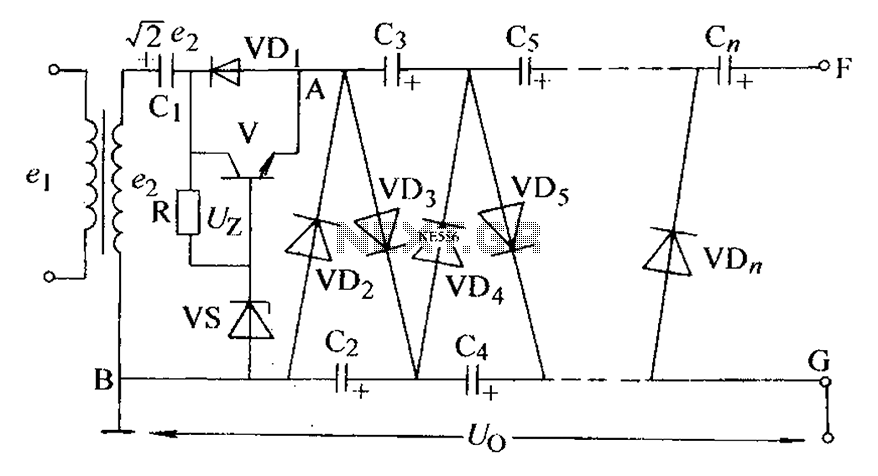
The circuit is an adjustable output voltage regulator type rectifier. It allows for obtaining peak voltage at odd multiples when the output voltage is taken from the circuit feedback (FB). Additionally, the lower point of the capacitor (CB) can yield even multiples of the peak voltage. The secondary voltage of the power transformer can be 220V from the mains supply.
The adjustable output voltage regulator circuit is designed to convert an AC input from a transformer into a stable DC output voltage. This is achieved through a rectification process followed by voltage regulation. The circuit typically consists of a transformer, a rectifier (which may be a bridge rectifier configuration), a filtering capacitor, and a voltage regulator component.
In this specific configuration, the transformer steps down the 220V AC mains voltage to a lower AC voltage suitable for the application. The secondary winding of the transformer produces an AC voltage, which is then rectified by the rectifier circuit. The rectification process converts the AC voltage into pulsating DC voltage.
The output voltage can be adjusted by manipulating the feedback mechanism of the circuit. When the output voltage is taken from the feedback (FB) point, it allows for the selection of odd multiples of the peak voltage, which can be useful in applications requiring specific voltage levels. Conversely, the lower point of the capacitor (CB) can be utilized to achieve even multiples of the peak voltage, providing flexibility in output voltage selection.
The filtering capacitor (CB) smoothens the rectified output by reducing voltage ripple, ensuring a more stable DC output. The voltage regulator, which may be implemented using integrated circuits such as the LM317 or similar devices, further stabilizes the output voltage against variations in load current and input voltage.
This circuit configuration is widely used in power supply applications where adjustable output voltages are required, such as in laboratory power supplies, battery chargers, and other electronic devices requiring regulated voltage levels. Proper thermal management and component ratings must be considered to ensure reliability and efficiency in operation. As shown for the adjustable output voltage regulator type rectifier circuit times. If the output voltage from the circuit FB, to obtain the peak voltage of an odd multiple, if the lower point of CB can be obtained even multiple of the peak voltage. e2 secondary voltage power transformers can be 220V mains.
The adjustable output voltage regulator circuit is designed to convert an AC input from a transformer into a stable DC output voltage. This is achieved through a rectification process followed by voltage regulation. The circuit typically consists of a transformer, a rectifier (which may be a bridge rectifier configuration), a filtering capacitor, and a voltage regulator component.
In this specific configuration, the transformer steps down the 220V AC mains voltage to a lower AC voltage suitable for the application. The secondary winding of the transformer produces an AC voltage, which is then rectified by the rectifier circuit. The rectification process converts the AC voltage into pulsating DC voltage.
The output voltage can be adjusted by manipulating the feedback mechanism of the circuit. When the output voltage is taken from the feedback (FB) point, it allows for the selection of odd multiples of the peak voltage, which can be useful in applications requiring specific voltage levels. Conversely, the lower point of the capacitor (CB) can be utilized to achieve even multiples of the peak voltage, providing flexibility in output voltage selection.
The filtering capacitor (CB) smoothens the rectified output by reducing voltage ripple, ensuring a more stable DC output. The voltage regulator, which may be implemented using integrated circuits such as the LM317 or similar devices, further stabilizes the output voltage against variations in load current and input voltage.
This circuit configuration is widely used in power supply applications where adjustable output voltages are required, such as in laboratory power supplies, battery chargers, and other electronic devices requiring regulated voltage levels. Proper thermal management and component ratings must be considered to ensure reliability and efficiency in operation. As shown for the adjustable output voltage regulator type rectifier circuit times. If the output voltage from the circuit FB, to obtain the peak voltage of an odd multiple, if the lower point of CB can be obtained even multiple of the peak voltage. e2 secondary voltage power transformers can be 220V mains.
